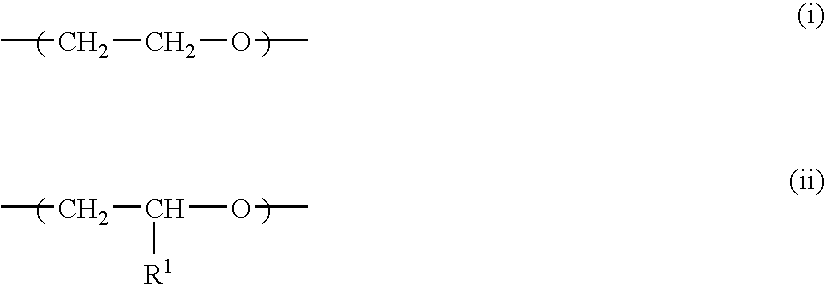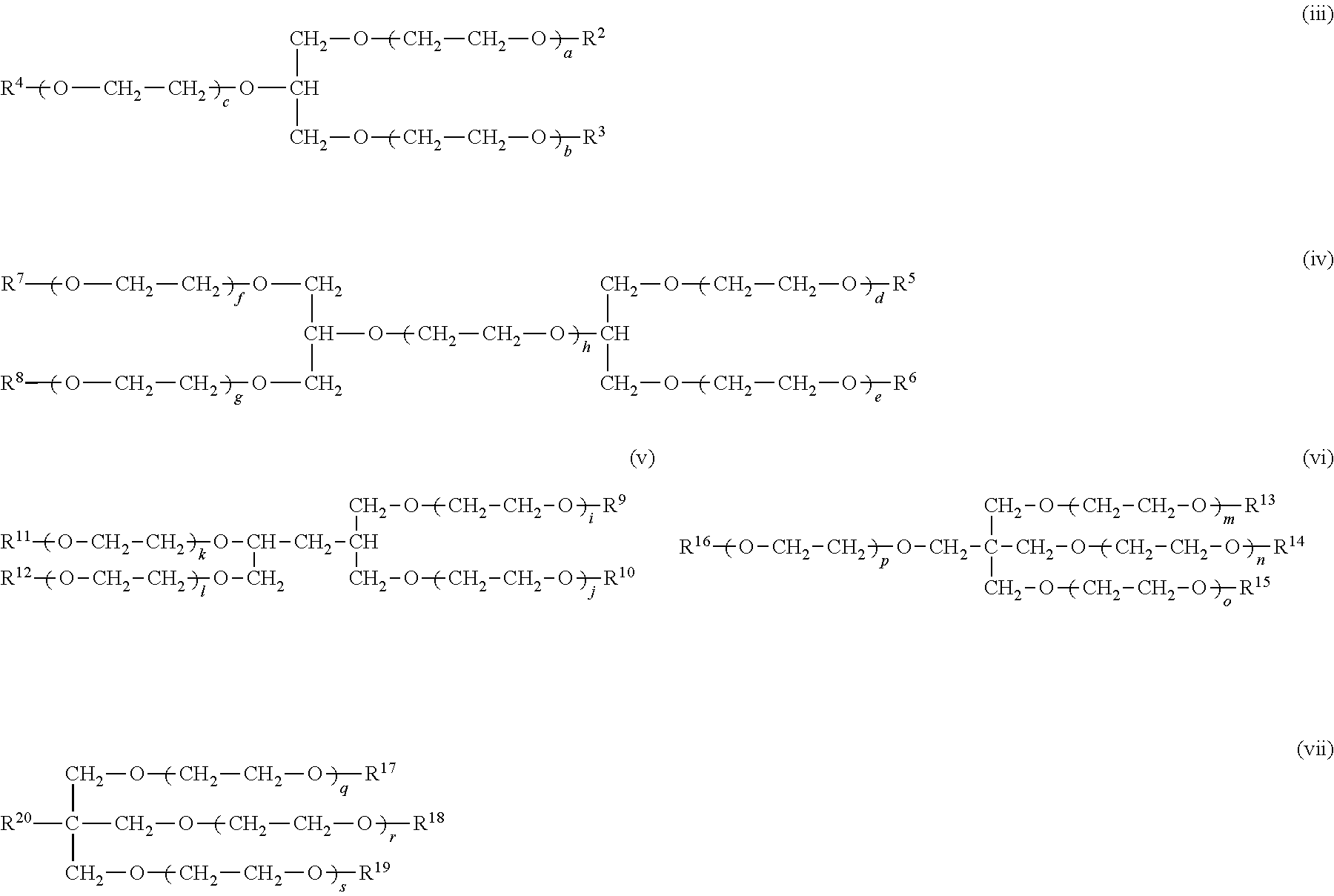Crosslinked polymer electrolyte and use thereof
a polymer electrolyte and crosslinked technology, applied in the field of polymer electrolyte composition, can solve the problems of inability to use electrolyte at high temperature, damage to an apparatus, and inferior ionic conductivity of organic polymer substances at present, and achieve excellent liquid retainability and ionic conductivity, excellent electrochemical properties, and wide use temperature range.
- Summary
- Abstract
- Description
- Claims
- Application Information
AI Technical Summary
Benefits of technology
Problems solved by technology
Method used
Image
Examples
preparation example
Production of Catalyst
[0053]Tributyltin chloride (10 g) and tributyl phosphate (35 g) were charged in a three-necked flask equipped with a stirrer, a thermometer and a distillation device, and the mixture was heated at 250° C. for 20 minutes while stirring under a nitrogen stream and the distillate was distilled off to obtain a solid condensate as a residue product. In the following, this condensate was used as a polymerization catalyst.
POLYMERIZATION EXAMPLE 1
Preparation of Polymer
[0054]After the atmosphere in a four-necked glass flask (internal volume: 3 L) was replaced by nitrogen, the condensate (2 g) obtained in the above Preparation Example as a catalyst, glycidyl methacrylate (60 g) having a water content adjusted to not more than 10 ppm and n-hexane (1,000 g) as a solvent were charged in the flask. Ethylene oxide (195 g) was gradually added with monitoring the conversion of glycidyl methacrylate by gas chromatography. The polymerization reaction was terminated by using metha...
example 1
[0057]1 g of the binary copolymer obtained in Polymerization Example 1, 10 g of ethylene carbonate, 10 g of γ-butyrolactone, 0.05 g of benzoyl peroxide as a radical initiator and 2 g of LiBF4 were homogeneously mixed to give a mixture liquid. This mixture liquid was coated on a separator with a double-sided coater and impregnated into a separator, and was kept at 90° C. for 10 hours to produce a crosslinked polymer electrolyte composition having the thickness of 40 micrometers. The ionic conductivity of the electrolyte composition was 8.3×10−4 S / cm at 30° C., which was higher than that obtained in Comparative Example 1.
example 2
[0058]1 g of the binary copolymer obtained in Polymerization Example 2, 10 g of ethylene carbonate, 10 g of propylene carbonate, 10 g of an additive containing an ether compound having ethylene oxide units of the following formula (viii), 0.05 g of benzoyl peroxide as a radical initiator and 0.1 g of N,N′-m-phenylene bismaleimide as a radical accelerator, and 2 g of lithium perchlorate were homogeneously mixed to give a mixture liquid. This mixture liquid was coated on a separator with a double-sided coater and impregnated into a separator, and was kept at 90° C. for 10 hours to produce a crosslinked polymer electrolyte composition having the thickness of 40 micrometers. The ionic conductivity of the electrolyte composition was 1.1×10−3 S / cm at 30° C., which was higher than that obtained in Comparative Example 1.
[0059]
PUM
| Property | Measurement | Unit |
|---|---|---|
| mol % | aaaaa | aaaaa |
| mol % | aaaaa | aaaaa |
| temperature | aaaaa | aaaaa |
Abstract
Description
Claims
Application Information
 Login to View More
Login to View More - R&D
- Intellectual Property
- Life Sciences
- Materials
- Tech Scout
- Unparalleled Data Quality
- Higher Quality Content
- 60% Fewer Hallucinations
Browse by: Latest US Patents, China's latest patents, Technical Efficacy Thesaurus, Application Domain, Technology Topic, Popular Technical Reports.
© 2025 PatSnap. All rights reserved.Legal|Privacy policy|Modern Slavery Act Transparency Statement|Sitemap|About US| Contact US: help@patsnap.com



